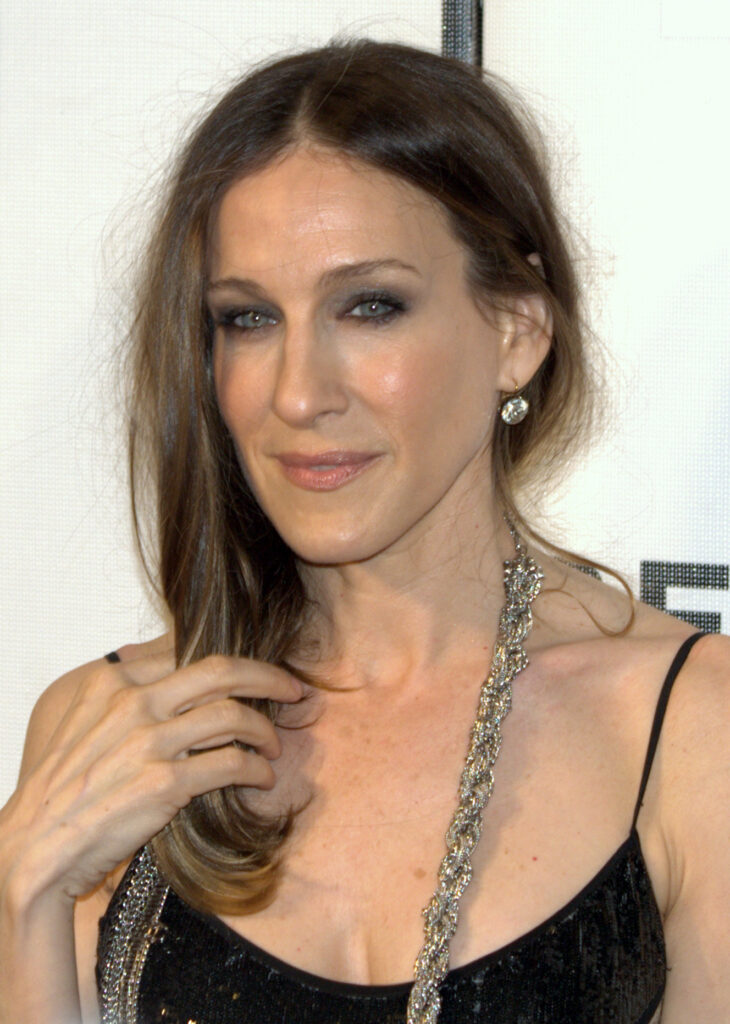
Hollywood, the dream factory, often presents a curated façade of glamour, success, and aspiration. Beneath the dazzling lights and red-carpet smiles, however, lies a complex ecosystem of power dynamics, fierce rivalries, and an unrelenting battle for control over public perception. This intricate world, far from being a bastion of genuine connection, harbors a darker, more insidious force: the Hollywood publicity machine, a sophisticated apparatus designed to shape, spin, and often, obliterate narratives. Its influence extends far beyond mere image management, delving into the realm of strategic disinformation and reputational warfare.
The core function of this clandestine machine, as recent revelations have underscored, is to keep a tight lid on fallouts and scandals, orchestrating behind-the-scenes maneuvers to ensure that industry conflicts rarely spill into the public domain unchecked. Yet, its role has subtly shifted and its challenges multiplied in the age of omnipresent digital media. While the mechanisms might evolve from hushed whispers to social media algorithms, the underlying objective remains chillingly consistent: to control the story, protect powerful interests, and, often, to silence or discredit those who pose a threat. It is a world where, as publicist and brand consultant Daniel Bee explains, “some of a publicist’s best work may never be seen,” precisely “because it stopped something that was wrong, or re-crafted something to a different narrative, or pointed the light in a different direction.”
For women in Hollywood, navigating this landscape of manufactured consent and targeted attacks can be particularly perilous. Their careers, their public image, and even their personal well-being are frequently subjected to intense scrutiny, weaponized narratives, and deliberate smear campaigns. In this in-depth exploration, we turn a critical eye to nine women who, in varying capacities and across different eras, have found themselves in the crosshairs of this formidable, often unforgiving, publicity machine. From the legendary figures of classic cinema to the stars grappling with the complexities of the digital age, their stories collectively illuminate the enduring and destructive power of Hollywood’s narrative architects.

1. **Blake Lively: The Modern Blueprint of a Proactive Smear** Blake Lively’s recent legal battle, brought to light in December 2024, offers a chillingly clear modern illustration of how Hollywood’s smear machine operates with ruthless efficiency. The dispute arose from the production of the film *It Ends With Us*, where Lively had reportedly complained about alleged sexual harassment on set by director and co-star Justin Baldoni and lead producer Jamey Heath. Although the studio initially agreed to safeguards and non-retaliation, Baldoni and Heath, who had previously positioned themselves as feminist allies, feared her allegations would become public and tarnish their reputations.
What ensued was an explicit public relations effort, detailed in a legal complaint filed by Ms. Lively, with the stated goal: “to harm Ms. Lively’s reputation instead.” Text messages between Baldoni’s publicist, Jennifer Abel, and crisis team leader Melissa Nathan (whose past clients include high-profile figures like Johnny Depp and Drake) reveal the stark ambition of this campaign. One particularly unsettling exchange quoted Ms. Nathan affirming, “You know we can bury anyone,” in response to a publicist’s comment that “He wants to feel like she can be buried.”
The effort appears to have been remarkably successful. Within days of the film’s release, a forensic review commissioned by Lively showed that negative media coverage and commentary constituted an “unusually high percentage of her online presence.” She was swiftly branded “tone-deaf, difficult to work with, a bully,” suffering “the biggest reputational hit of her career.” Shockingly, sales of her new hair-care line plummeted, with headlines asking, “Is Blake Lively set to be CANCELLED?” Meanwhile, Baldoni was honored at an event celebrating men who “elevate women, combat gender-based violence and promote gender equality worldwide.” This stark contrast vividly illustrates the machine’s efficacy.
The campaign leveraged various tactics, including amplifying existing grievances. A 2016 interview clip with Norwegian entertainment reporter Kjersti Flaa, where Lively appeared testy, was re-uploaded to YouTube with the inflammatory title “The Blake Lively interview that made me want to quit my job.” Flaa notably had a history of aligning with Nathan’s clients, having previously posted pro-Depp clips during his legal battle with Amber Heard. Lively also faced criticism for supposedly being “insensitive about domestic violence” during the film’s promotion, an ironic twist given the movie’s themes and her initial allegations.
Further layers of digital manipulation were meticulously deployed. Emails hinted at “social manipulation” and “proactive fan posting,” while text messages cited efforts to “boost” and “amplify” online content favorable to Baldoni or critical of Lively. A publicist boasted, “We are crushing it on Reddit,” and later confirmed a “shift on social, due largely to Jed and his team’s efforts to shift the narrative.” Baldoni himself actively encouraged the team, flagging social media posts and even suggesting “flipping the narrative” on positive stories about Lively. This orchestrated digital onslaught demonstrates a deeply unsettling evolution of the smear machine, where public opinion can be manufactured and weaponized with frightening precision against individual women.

2. **Bette Davis: The Target of Public Sniping in Hollywood’s Golden Age** Long before the age of digital algorithms and crisis PR teams, Hollywood’s public figures engaged in their own forms of narrative control and reputational warfare. One of the most legendary and protracted rivalries was that between Bette Davis and Joan Crawford, a tempestuous relationship that dominated headlines and fueled gossip for decades. This “back-and-forth sniping” of the 1930s and 40s serves as an early, albeit more overt, manifestation of the smear machine’s fundamental goal: to undermine a rival’s public standing.
Joan Crawford’s barbed remarks about Davis, openly declared and widely circulated, exemplify this era’s method of damaging a peer’s image. Statements like, “She’s a phony, but I guess the public likes that…” and “Bette is a survivor… She survived herself,” were not merely private grievances. They were calculated public pronouncements, designed to chip away at Davis’s carefully constructed persona and professional credibility. In an industry built on perception, such direct attacks, even if not orchestrated by a formal PR team, had a profound impact on how Davis was viewed by audiences and industry insiders alike.
While lacking the sophisticated digital tactics of today, the public feud achieved a similar outcome: shaping a negative narrative around one of its protagonists. The constant focus on their rivalry overshadowed their individual achievements at times, reducing complex women to caricatures of professional jealousy. This dynamic highlights Daniel Bee’s astute observation that “undetected smear campaigns have always been a thing,” previously manifesting as “a publicist whispering to a diarist of a national newspaper.” The public spectacle of the Davis-Crawford feud, even without anonymity, was a powerful mechanism for shaping their respective legacies and public images.
The longevity and notoriety of their feud were so significant that it inspired the Emmy-winning 2017 TV series, *Feud*, decades after their deaths. This continued fascination speaks volumes about the enduring impact of their public animosity, and how deeply ingrained these narrative battles become in Hollywood lore. For Bette Davis, being the constant target of such high-profile, personal attacks meant navigating a career where her talent often had to contend with the relentless shadow of her rival’s public disapprobation, a form of reputational victimhood that predates the internet by many decades.

3. **Joan Crawford: Navigating the Double-Edged Sword of Public Rivalry** Just as Bette Davis was a target, Joan Crawford, too, was inextricably caught in the narrative web of their epic rivalry, becoming a victim of the very machine she sometimes leveraged. While she delivered some of the most memorable public barbs against Davis, the “tempestuous relationship” was a two-way street, consuming both actresses and shaping their public personas in profound ways. The industry’s insatiable appetite for drama and its inherent need to “control the narrative” meant that both women’s careers and legacies became defined, in part, by this highly public conflict.
The continuous back-and-forth, even if often initiated or fueled by one or the other, created an environment of intense scrutiny where every action and perceived slight was amplified. This dynamic made Crawford equally susceptible to the narrative’s grip. Her public comments, while seemingly intended to diminish Davis, also contributed to a broader narrative of a difficult, competitive woman, which, over time, could become a double-edged sword for her own public image. The line between being a manipulator of public opinion and a victim of the public narrative itself often blurred in such high-stakes feuds.
The detailed analysis of Hollywood’s public relations underscores that “Hollywood is a world full of very messy people coming together for these giant projects,” and that “a lot of stuff goes on, and they deal with it quietly – they’re very obsessive about controlling the narrative.” While the Davis-Crawford feud was anything but quiet, its very public nature indicates a moment when the industry’s control over certain narratives slipped. For Crawford, this meant her public image was not entirely her own, but rather a co-creation of her own actions, Davis’s reactions, and the media’s eager consumption.
The cultural imprint of their rivalry, memorialized in popular media like the series *Feud*, ensures that Joan Crawford’s story remains intertwined with this battle. It demonstrates how even a powerful, celebrated star could be ensnared in a narrative that, while increasing her notoriety, also subjected her to intense scrutiny and judgment, shaping how she was remembered by the industry and the public. She was a woman caught in a cycle of public perception that, despite her own contributions, ultimately became a machine beyond her sole control.

4. **Charlize Theron: The Silent Fallout and Professional Peril** The subtle yet significant ways in which Hollywood’s narrative machine can impact women extend beyond explicit smear campaigns or public feuds, delving into the realm of “silent fallouts” and alleged tensions that simmer beneath the surface. Charlize Theron’s experience during the production of *Mad Max: Fury Road*, marked by “alleged tensions” with co-star Tom Hardy, serves as a poignant example. The revelation that the two stars reportedly filmed many of their scenes separately speaks to a deeper professional rift that, while not a public mudslinging match, still carries significant weight in the tightly controlled ecosystem of filmmaking.
In an industry “very obsessive about controlling the narrative,” as Richard Rushfield, founder of The Ankler, explains, “when this stuff explodes into the public, beyond control, it makes everyone very nervous.” While the specifics of Theron and Hardy’s disagreements never fully “exploded” into the kind of explicit public spat seen in other cases, the mere acknowledgment of “alleged tensions” became part of their respective professional narratives. For an actress, being associated with on-set difficulties, however subtle, can quietly impact future opportunities and perceived ease of collaboration, creating a form of reputational vulnerability.
The power of the Hollywood machine often lies in what remains unsaid, or in the carefully managed silence surrounding internal conflicts. Publicists’ “best work,” as Daniel Bee suggests, often involves stopping or re-crafting narratives before they become public knowledge. When tensions like those involving Theron and Hardy do surface, even in a limited capacity, they become subject to speculation and interpretation. This ambiguity can itself contribute to a subtle form of reputational damage, leaving room for industry whispers that can be just as potent as overt accusations.
For women, in particular, any perception of being “difficult” on set can carry disproportionate consequences, often amplified by existing biases within the industry. Charlize Theron, a highly respected and acclaimed actress, found herself navigating a situation where professional differences became public knowledge, hinting at a narrative of potential friction. This situation, though not a direct smear, demonstrates how the industry’s obsession with a smooth, controlled image can turn any deviation into a potential vulnerability, making even an unspoken conflict a tool that subtly harms a woman’s professional standing and public perception. Her experience highlights a form of victimhood where the absence of a clean narrative can be as damaging as its deliberate manipulation.

5. **Kim Cattrall: The Public Fallout of a Lingering Rift**Continuing our exploration of women caught in Hollywood’s narrative crossfire, the protracted and highly public feud between *Sex and the City* co-stars Kim Cattrall and Sarah Jessica Parker stands as a poignant illustration of how personal disagreements can morph into industry-defining sagas. This wasn’t merely a private tiff; it was a deeply ingrained professional and personal schism that, over the years, simmered beneath the surface of a beloved franchise before finally erupting into the public domain. The intensity of their alleged tensions, while not involving a direct, orchestrated smear campaign in the traditional sense, provided fertile ground for the media machine to dissect and amplify every perceived slight, casting both women into a difficult, often unflattering, light.
Cattrall, in particular, became the focal point of a narrative portraying her as difficult or uncooperative, particularly concerning discussions around potential spin-offs or reboots. Her public rejection of Sarah Jessica Parker’s condolences following the death of Cattrall’s brother in 2018 marked a critical turning point. Cattrall’s sharp social media response, explicitly stating, “You are not my family. You are not my friend,” was a defiant declaration that shattered the carefully constructed illusion of camaraderie. While an act of personal agency, it also solidified a public image that the industry and media were quick to interpret and magnify, often to her professional detriment.
This kind of public-facing animosity, even when not overtly coordinated by crisis PR, is eagerly seized upon by the Hollywood ecosystem, which thrives on drama and celebrity conflict. The consistent media attention on their “alleged tensions” meant that Cattrall’s professional identity became increasingly entwined with the narrative of a challenging personality. In an industry where a reputation for being “difficult to work with” can be a silent career killer, especially for women, the public amplification of such a feud became a subtle but effective form of reputational pressure, regardless of the underlying truths or personal grievances.
The constant scrutiny and the persistent narrative of discord ultimately overshadowed much of Cattrall’s other work and contributions, reducing a complex actress to a character within a protracted industry drama. This demonstrates how the very appetite for celebrity gossip, fueled by an omnipresent media, can ensnare women in narratives that become difficult to escape, compelling them into a victimhood shaped by public perception rather than solely by their own actions. Her journey through this highly public disagreement underscores how the machine, even without explicit manipulation, can turn internal conflicts into widely consumed, career-altering sagas.

6. **Sarah Jessica Parker: Navigating the Backlash of Public Conflict**Intricately linked to the narrative of Kim Cattrall’s public disavowal is the experience of Sarah Jessica Parker, who also found herself caught in the public fallout of their prolonged professional and personal estrangement. While often positioned as the more accommodating party in the *Sex and the City* dynamic, Parker’s attempts to bridge the chasm were publicly rebuffed, leaving her exposed to the very public judgment and scrutiny that Hollywood’s narrative machine so readily amplifies. Her offering of condolences, a seemingly simple and empathetic gesture, was met with a scathing public rebuke from Cattrall, transforming a moment of personal grief into a fresh wave of media spectacle.
This public rejection thrust Parker into an unenviable position, where her attempts at reconciliation were twisted into a narrative of hypocrisy by Cattrall, and by extension, parts of the public. The industry’s relentless focus on their “alleged tensions” meant that Parker, despite her considerable stature and carefully cultivated image, was subjected to intense scrutiny over her sincerity and past conduct. It became a situation where, irrespective of her intentions, the drama itself became the story, undermining her public persona and creating a vulnerability to criticism that was largely outside her control.
The nuanced complexities of their relationship were flattened into a simplistic narrative of hero and villain, or at least two deeply incompatible figures. For Parker, this meant her efforts to move forward or even express empathy were consistently framed through the lens of their rivalry, demonstrating how the “smear machine” doesn’t always require a direct, malicious campaign. Instead, it can capitalize on existing conflicts, amplifying them to a point where one’s personal attempts to navigate a difficult situation become fodder for public consumption and critical dissection, subtly chipping away at a carefully built reputation.
Her experience vividly illustrates that even a star with significant power and influence can become a victim of a narrative spiraling beyond individual control, especially when personal dynamics are played out in the unforgiving arena of public opinion. In Hollywood’s ecosystem, where “a lot of stuff goes on, and they deal with it quietly – they’re very obsessive about controlling the narrative,” Parker’s situation represents a rare instance where the lid came off, leaving her, like Cattrall, to contend with the enduring shadow of a deeply public and often misconstrued conflict. This public entanglement, unintended by Parker, became a form of reputational victimhood shaped by the voracious appetite of the media machine.

7. **Amber Heard: The Weaponization of Digital Fandom**In the contemporary landscape of Hollywood’s narrative wars, few cases highlight the brutal efficacy of the digital smear machine quite like the highly publicized legal battle involving Amber Heard. While the context provided specifically mentions Kjersti Flaa, a Norwegian entertainment reporter, posting pro-Depp clips tagged #JusticeForJohnnyDepp during his legal battle with Ms. Heard, this singular detail serves as a stark proxy for a much larger, insidious campaign. It points directly to the tactic of leveraging individual media figures and strategically deployed social media content to shape public perception, often with devastating consequences for the targeted woman.
Flaa’s alignment with Melissa Nathan’s clients, including Baldoni and Depp, underscores a pattern of calculated narrative manipulation. This isn’t merely organic public opinion; it’s the meticulous deployment of “astroturfing”—disguising an orchestrated campaign as a spontaneous up-swelling of public sentiment. In Heard’s case, the digital ecosystem became a battleground where “disinformation, or twisted versions of the truth,” were deliberately planted and amplified across social media. This created an overwhelming tide of negative sentiment, meticulously designed to position her as an aggressor and to discredit her claims.
The effectiveness of such campaigns, as highlighted by publicists’ boasts of “crushing it on Reddit” and seeing a “shift on social,” meant that public opinion was not merely influenced but actively manufactured against Heard. Her public image and credibility were systematically dismantled through what became a globally televised and digitally amplified trial by media. The sheer scale and coordination of these efforts, even if not fully detailed in the immediate context, exemplify how the modern smear machine can harness the power of social media to turn a personal and legal dispute into a widespread reputational annihilation.
Amber Heard’s experience serves as a chilling testament to the capacity of “powerful forces at play” to weaponize public sentiment. When “a large amount of misinformation” is deployed and amplified through anonymous algorithms and targeted content, the individual—especially a woman in the public eye—can find herself defenseless against a tsunami of manufactured outrage. This case underscores a new, highly effective form of victimhood, where digital narratives, once established, become almost impossible to counter, leaving lasting scars on careers and personal lives.

8. **Melissa Barrera: The Implied Cost of Dissent**While the specific details surrounding Melissa Barrera’s experience are not explicitly laid out in extensive detail, her mention within industry discourse as a reference point for the smear machine’s capabilities speaks volumes. The comment, “And this an actress with a powerful husband and long career. Imagine a nobody. See what they did to Melissa Barrera,” serves as a stark, implicit warning. It suggests that Barrera, like others, found herself in the crosshairs, and her situation is widely understood within certain circles as an example of what happens when one defies or otherwise displeases powerful elements within Hollywood.
This brief but impactful reference highlights a crucial aspect of Hollywood’s narrative control: the machine operates not only through overt campaigns but also through a culture of implied threats and silent consequences. For women, particularly those who may not possess the entrenched power or high-profile backing of an A-lister like Blake Lively, the risk of reputational damage for speaking out or becoming embroiled in controversy is exponentially higher. Barrera’s case, by its very allusion, becomes a cautionary tale, illustrating how vulnerable individuals can be to professional repercussions that may never fully surface in public view but are acutely felt within the industry.
The effectiveness of this hidden mechanism aligns perfectly with Daniel Bee’s insight: “Some of a publicist’s best work may never be seen… because it stopped something that was wrong, or re-crafted something to a different narrative, or pointed the light in a different direction.” In Barrera’s context, this could imply that a narrative was either preemptively squashed, or her public image was quietly reshaped and limited, without the explosive headlines that characterized other disputes. Her name, whispered as an example of consequence, underlines the pervasive reach of the smear machine, extending its influence into the careers of individuals whose stories are often kept out of the mainstream spotlight.
Therefore, Melissa Barrera represents a different kind of victimhood—one where the lack of an overt public scandal does not equate to an absence of reputational impact. Instead, it signifies the machine’s ability to operate with subtle, yet devastating, efficiency, ensuring that certain narratives are never allowed to fully develop or challenge established power structures. Her inclusion in this discussion, even through an indirect reference, underscores the pervasive and often invisible ways in which women in Hollywood can find their careers curtailed and their voices suppressed, serving as a powerful, if understated, testament to the machine’s reach.

9. **The #MeToo Movement: The Erosion of Collective Narrative**Beyond individual women targeted by specific campaigns, the Hollywood smear machine has evolved to undermine broader movements and narratives, profoundly impacting countless victims. A particularly insidious form of this reputational warfare is the erosion of public trust in stories of harassment and abuse, a phenomenon acutely observed by writer Doreen St Felix. She noted that #MeToo reportage now often receives a “curdled, cynical, and exhausted reception,” a stark contrast to its initial impact less than a decade ago. This collective weariness is not accidental; it represents a sophisticated form of discrediting that victimizes an entire narrative and, by extension, every woman who dares to speak out.
This shift in public perception, where “information is misinformation and vice versa,” is a direct triumph for the forces that seek to control and suppress inconvenient truths. When St Felix asserts that “Victims are offenders and offenders are victims,” she encapsulates the essence of this advanced smear tactic. It’s a deliberate blurring of lines, a systematic dismantling of clarity and moral certitude, designed to sow confusion and cynicism. This manufactured ambiguity effectively silences women by making their testimonies seem unreliable, their experiences questionable, and their motives suspect, even before a specific accusation is leveled.
The digital landscape, with its “anonymous algorithm and accounts where you don’t know who you’re up against,” has become a fertile ground for this systemic discrediting. Tactics like “astroturfing” and the strategic “boost[ing]” and “amplify[ing]” of dissenting or cynical viewpoints contribute to this pervasive atmosphere of doubt. While not targeting a single woman, this pervasive environment impacts *all* women who might consider coming forward, making them hesitant to share their stories for fear of being met with skepticism, accusations of opportunism, or outright disbelief. The very infrastructure of public discourse has been turned against them.
Ultimately, the “curdled, cynical, and exhausted reception” of #MeToo stories represents a profound and pervasive form of victimhood for women in Hollywood and beyond. It signifies a chilling success for the smear machine, which has managed to transform collective empathy into widespread distrust, creating an environment where accountability is elusive and the voices of survivors are marginalized. This sophisticated manipulation of the public narrative itself ensures that the broader struggle for justice and safety for women is undermined, making every potential accuser a casualty of a battle fought on the digital front, long before their story even begins. This is not just about damaging individual careers; it’s about subverting the very possibility of collective action and belief.
In dissecting these varied accounts, from overt public battles to the subtle erosion of collective trust, it becomes powerfully evident that Hollywood’s smear machine is not a relic of the past, but an ever-evolving entity. Its methods may shift from hushed whispers to algorithmic manipulation, but its core function remains chillingly consistent: to control the narrative, protect powerful interests, and often, to silence or discredit those who pose a threat—a threat too often embodied by women daring to challenge the status quo. The stories of these nine women, across different eras and circumstances, serve as a potent reminder of the enduring vigilance required to navigate, and perhaps one day dismantle, this formidable apparatus.



